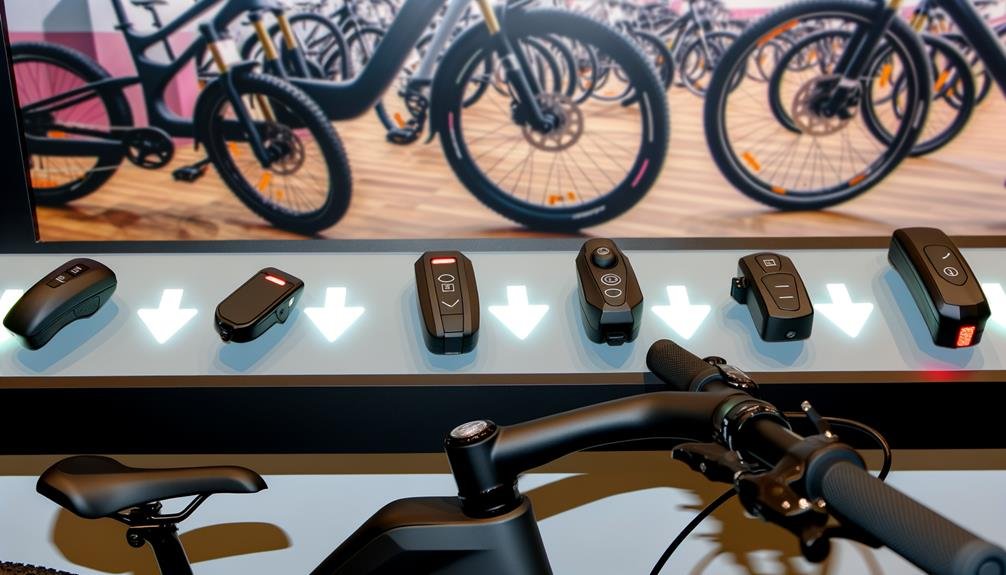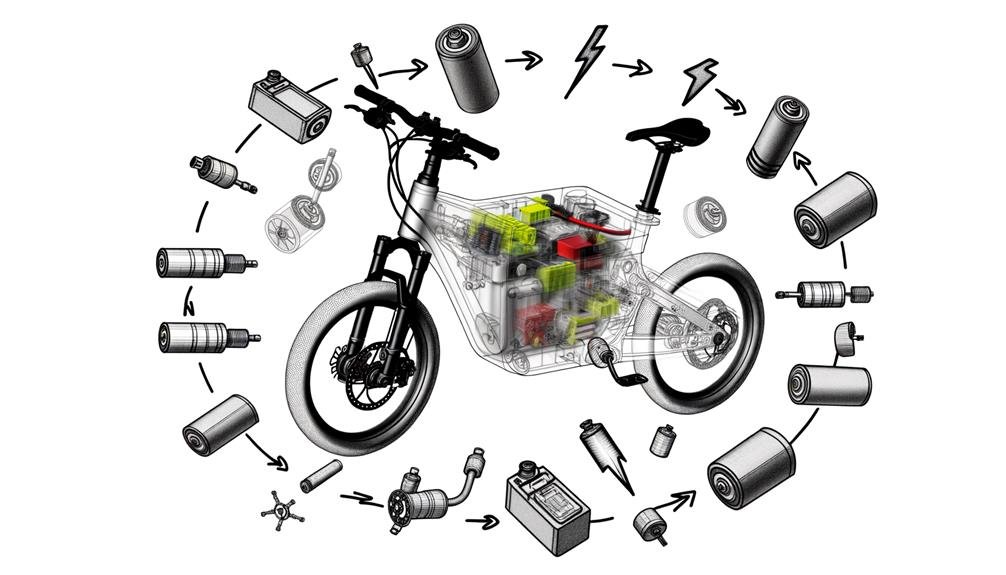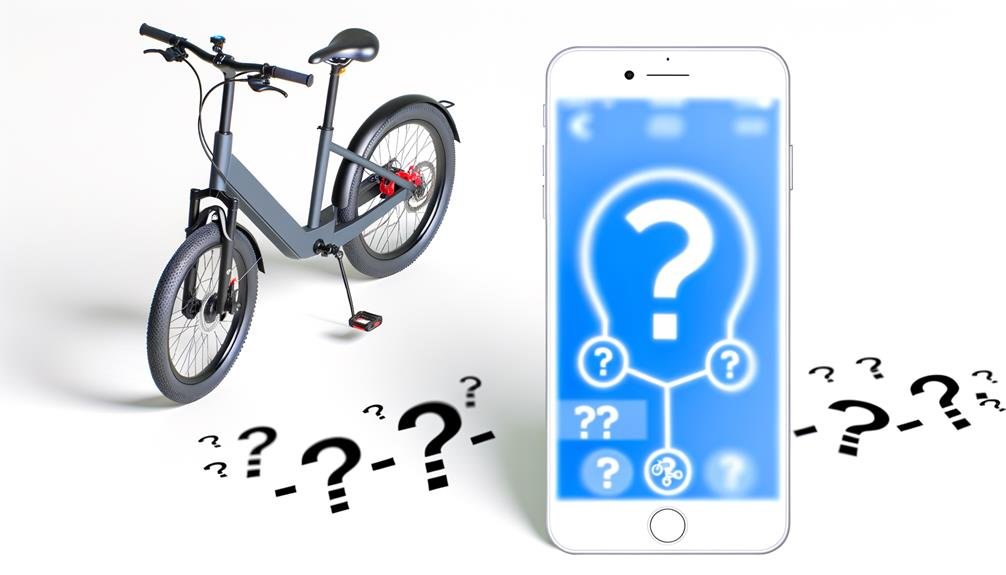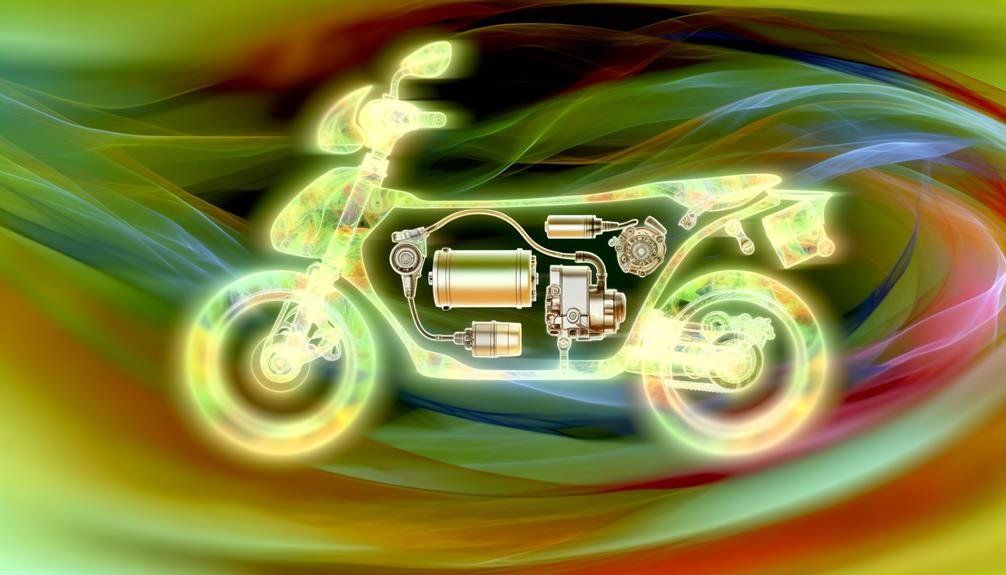Charles Miller is a veteran bike enthusiast with over 12 years of experience dealing with bikes as a mechanic. Despite immense love and expertise for...
Finding the controller on an ebike can feel like hunting for the proverbial needle in a haystack. We've all been there, trying to make sense of the numerous components and wondering where exactly that elusive controller is hiding. Is it nestled securely in the case, or perhaps perched on the rear rack? Maybe it's even tucked under the crank.
The location of this crucial piece of machinery isn't just a matter of curiosity. It can significantly impact factors like theft protection, weather-proofing, and accessibility. So, where is the controller on an ebike and why should we care?
Let's unravel this mystery together.
- Key Takeaways
- Understanding E-bike Controllers
- Functionality of E-bike Controllers
- Types of E-Bike Controllers
- Locating the E-bike Controller
- Upgrading Your E-bike Controller
- Choosing a New E-bike Controller
- E-bike Controller: Voltage and Power
- Detecting Controller Malfunctions
- Frequently Asked Questions
- Conclusion
Key Takeaways
- The controller is a crucial component that directs power from the battery to the motor.
- Mounting the controller outside the case allows for cooling and reduces rain-related issues.
- Waterproofing and positioning the controller below the crank ensures airflow and protection from road spray.
- The location of the controller should consider theft protection, weather resistance, and cooling requirements.
Understanding E-bike Controllers
To fully harness the potential of your e-bike, it's imperative to understand the role and function of the controller, a device that can be securely locked to the case to safeguard against theft. The controller is the brain of your electric bike, directing the power from the battery to the motor. Knowing where's the controller on an ebike is crucial as it impacts both performance and maintenance.
Traditionally, the controller is mounted outside the case on the front side. This exposes it to air, aiding in cooling, and reduces rain-related issues. However, we've seen a trend towards waterproofing and mounting the controller below the crank, providing good airflow and protection from road spray and rain.
If you're considering an upgrade, remember that a new controller should match the e-bike's voltage and power requirements. Separation from the battery may also be advantageous, allowing for mounting onto the rack or frame with an aluminum plate for heat conduction.
In our journey of understanding e-bike controllers, we've got to remember that the controller is an integral part of the electric bikes, being the crucial link between the motor and controller.
Functionality of E-bike Controllers
How does an e-bike controller function, you may wonder? It's the brain of your electric bike, dictating how power is distributed from the battery to the motor, providing you the desired speed and torque.
The controller can be securely locked to the case, or mounted on the rear rack, offering protection from theft and weather elements. When mounted outside the case on the front side, it benefits from cooling, reducing potential rain-related issues. Waterproofing and positioning the controller below the crank ensures airflow and safeguards it from road spray and rain.
There's also the option to separate the controller from the battery, mounting it onto the rack or somewhere on the frame. This can offer more flexibility in terms of the bike's overall design, and even enhance its performance.
The controller's functionality is integral to your e-bike's performance. It's not just about where it's located, but how it's installed and protected. By understanding this, we become part of a community that values and appreciates the technical marvel that's the electric bike.
We belong to a group that recognizes the importance of each component and their specific roles in making our e-bike journeys smooth and enjoyable.
Types of E-Bike Controllers

Now we'll shift our focus to the various types of E-Bike controllers present in the market.
We'll examine the distinct features of each type, and how they contribute to the overall performance of the E-Bike.
Additionally, we'll cover some of the popular brands known for producing reliable and efficient controllers.
Understanding E-Bike Controllers
In delving into the realm of e-bike controllers, we find that they can be mounted permanently to the case, offering both theft and weather protection. This secure positioning is often done inside the frame, which further enhances their safety from external factors.
Other mountings expose the controller to elements, increasing theft vulnerability but providing space for additional batteries. Some prefer to mount the controller outside on the front side, allowing for cooling and theft protection.
Meanwhile, waterproofing and strategically placing the controller below the crank can offer protection and good airflow. Separating the controller from the battery can improve heat management and security.
As we explore these options, we're reminded of the importance of understanding our e-bike's controller placement.
Popular Controller Brands
Diving into the world of popular e-bike controller brands, we see names like Infineon and Sabvoton leading the pack with their reputable performance and reliability. Kelly and Grin also command respect with their range of e-bike controller options, offering a variety of features and specifications.
We find sine wave, square wave, and programmable controllers among the popular types these brands offer. For those of us who seek advanced features and customization, brands like ASI, Votol, and Adaptto hold considerable appeal. Additionally, Regen and Cycle Analyst stand out for their controllers offering regenerative braking and advanced monitoring capabilities.
Being part of the e-bike community means understanding and appreciating the value each of these trusted brands brings to our riding experience.
Locating the E-bike Controller
Understanding where to locate the E-bike controller involves considering factors such as theft protection, weather resistance, and cooling requirements. As part of our biking community, we're here to help you make the best choice for your E-bike setup.
To begin with, the controller can be secured to the case using zip ties or a lock, offering robust theft protection. However, this setup may not provide optimal cooling. If cooling is a priority, mounting the controller on the front side of the case might be a better option. Despite its exposure, this position allows for better airflow.
Consider these options:
- Lock the controller in the case for maximum security
- Mount it on the front side of the case for efficient cooling
- Waterproof and situate the controller below the crank to guard against rain and road spray
- Separate the controller from the battery and mount it on the rack or frame for added security
- Consider a handlebar bag installation for a weather-proof solution
We should always balance the need for security, weather resistance, and cooling when deciding where to locate our E-bike controller.
Upgrading Your E-bike Controller

Having considered the optimal location for your E-bike controller, let's now explore how to upgrade it for enhanced performance and convenience.
Upgrading your e-bike controller isn't just about boosting speed or power, but also about ensuring optimal operation, longevity, and security.
First, consider a controller with a permanent lock feature to the case. This not only safeguards your controller from theft but also protects it from harsh weather conditions. If your current controller lacks this feature, it's time for an upgrade.
Next, contemplate mounting your controller on the rear rack. This convenient location facilitates easy access and reduces the chances of accidental damage.
For better cooling efficiency, ensure your upgraded controller has moderate airflow. Look for controllers with an air pipe inflow and exhaust to maintain an optimal temperature, thereby enhancing performance and lifespan.
Alternatively, mounting the controller outside the case on the front side can also improve cooling and reduce issues caused by rain.
Always remember, upgrading your e-bike controller is a worthwhile investment that can significantly improve your riding experience. It's about being part of an e-bike community that values performance, convenience, and security.
Choosing a New E-bike Controller
When we're on the hunt for a new E-bike controller, it's crucial to factor in elements such as voltage, power, and current limiting to ensure the controller meets the bike's demands while providing reliability and stability. Choosing a new E-bike controller isn't a task to be taken lightly.
There are several considerations to bear in mind:
- The controller should ideally be locked to the case for security.
- Consider mounting the controller on the front side for cooling and to reduce rain-related issues.
- Waterproofing the controller and mounting it below the crank can provide good airflow and protect against road spray and rain.
- Separating the controller from the battery allows for better heat dissipation.
- Always remember to match the controller's voltage, power, and current limiting to the bike's requirements.
E-bike Controller: Voltage and Power

Now that we've addressed the importance of selecting and securely installing an E-bike controller, let's explore the critical aspects of voltage and power it must handle for optimal performance. These elements are crucial in ensuring your E-bike operates efficiently while providing the necessary power to suit your riding needs.
The voltage of your E-bike controller dictates the amount of power your E-bike can reach. Generally, higher voltage translates to higher power, and thus, increased speed. However, one must log the power usage to prevent straining the controller and causing overheating.
Power, on the other hand, determines the E-bike's overall performance. The power rating is the maximum amount of power the controller can handle, often measured in watts.
Here's a simple table to illustrate important considerations:
| Factor | Consideration |
|---|---|
| Voltage | Higher voltage can result in higher speed, but must log usage to prevent overheating |
| Power | Determines overall E-bike performance and is measured in watts |
| Security | Controller should be securely installed and locked |
| Protection | Controller should be protected from weather elements |
Understanding these crucial aspects can help you make a more informed decision when selecting your E-bike controller.
Detecting Controller Malfunctions
Detecting controller malfunctions early can save you from potential costly repairs and ensure the continued optimal performance of your E-bike. As a community of E-bike enthusiasts, we've seen firsthand how unnoticed malfunctions can lead to major issues down the line. Believe me, I've never seen a happy E-biker who's ignored these signs and ended up with a hefty repair bill!
Here are some key signs of a malfunctioning controller we've learned to identify:
- Unexpected motor cut-offs: This could mean your controller is failing to deliver consistent power.
- Reduced top speed: If you notice a significant drop in your E-bike's top speed, the controller might be to blame.
- Inconsistent acceleration: This may indicate a controller problem.
- Erratic LED light behavior: The LED light on your controller should be steady. If it's flickering or behaving erratically, this is a clear sign of a malfunction.
- Unusual noise from the motor: A healthy E-bike motor runs smoothly. If you hear any strange noises, it could be a sign of a controller issue.
If you notice any of these signs, don't ignore them. Let's keep our E-bikes running smoothly and efficiently!
Frequently Asked Questions
Where Is the Ebike Controller Located?
We've placed the ebike controller in various spots for optimal controller functionality. It could be mounted on the handlebars, frame, or rack. We've made sure it's secure, accessible, and protected from weather and theft.
What Does a Controller Look Like on a Ebike?
We're often asked what an ebike controller looks like. Generally, it's a small box-like unit with cables running from it. The controller design varies, but it's crucial for regulating the bike's electrical components.
Do All Ebikes Have a Controller?
Yes, all ebikes have a controller. It's a crucial component, despite controller variations across different models. We're all part of this ebike community, learning and navigating the intricacies of these fantastic machines together.
How Do I Know if My Ebike Controller Is Bad?
We'll know our ebike controller's malfunctioning if we notice power cuts, inconsistent motor function, or display errors. We'll check connections and may seek expert help. Replacing it might be necessary, but we'll proceed with caution.
Conclusion
We've covered a lot about e-bike controllers, their functionality, and placement.
Did you know that an incorrectly placed controller can reduce an ebike's efficiency by up to 10%?
Ensuring it's in the ideal location for cooling, protection, and ease of access can make all the difference.
Keep this in mind, whether you're upgrading your controller or choosing a new e-bike.
Understanding and maintaining your controller keeps your ride smooth, efficient and fun.
Stay tuned for more technical insights!

Charles Miller is a veteran bike enthusiast with over 12 years of experience dealing with bikes as a mechanic. Despite immense love and expertise for his Tacoma, he rides his Trek Ebike more. Anytime you meet him, you’ll either hear him talking about Bikes, or writing about all things bikes and cars on this blog.
More Posts


